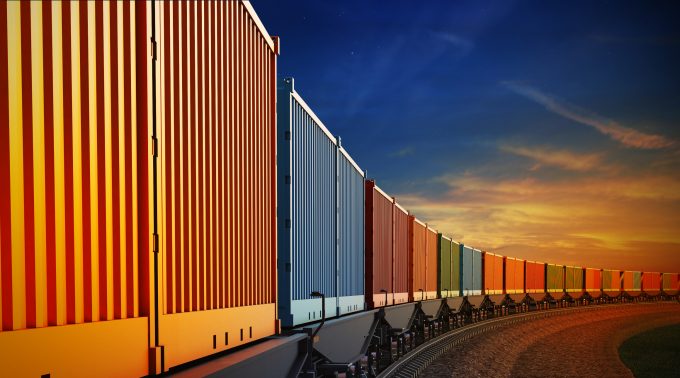DB Schenker keen to renew order with resurrected electric truck builder Volta
DB Schenker wants to renew its order for Volta Trucks and believes the new electric ...

2017 will be the year that China-Europe rail services shift supply chain patterns.
As the first train from China rolled into London today, having left on new year’s day, the CEO of Kazakhstan’s dry inland port, Khorgos Gateway, told The Loadstar the services would eat into sea and air freight volumes.
“We now have two trains per day, with about 80 teu and 41 containers per train,” explained Karl Gheysen. “It runs three times a week to Duisberg, but we have also have services to the Netherlands, Madrid, Iran and now the UK.
“The capacity is 540,000 teu a year, but we could make it a million.”
Khorgos Gateway was built by the Kazakhstan government where the rail gauge changes – making it a good point for transhipment. There are now some 10 rail lines from the gateway, opening almost limitless options around Europe, the CIS and Asia.
Forwarders are increasingly using the service, while DHL has plans to build warehouses for its customers at the dry port.
“Its real advantage is 15 days’ transit over 45 days for sea freight,” said Mr Gheysen. “And exports are starting – we have requests for backloads now.”
The service costs roughly twice as much as port-to-port sea freight, but about half the cost air.
Some estimates suggest the rail connection could take as much as 10% of sea freight volumes on the relevant tradelanes, but Mr Gheysen disputed this: “it could take maybe 3-5%. That would be the maximum.”
Hewlett-Packard (HP) was one of the first shippers to use the service and now accounts for 30-40% of total capacity.
Mr Geysen explained that the rail advantage over sea was not just time.
“It is cost-effective for some products, but not all. It’s more expensive than sea, but HP, for example, manufactures more than 1,000km from a seaport. If you add inventory costs during transport, and first and final mile, sea becomes less cheap, especially for higher-value goods. It’s the perfect middle ground. And there are different product groups that fit in that pitch.”
But, he warned: “Air freight will be more affected than shipping.”
One analyst concurred. “It does seem like a near-fatal threat to areas of the airfreight sector.”
Shippers now see the route as a viable alternative to air freight and air-sea freight into Dubai-Singapore-China, he added.
Meanwhile, postal services are increasingly taking notice of the rail services, while Alibaba is thought to be “very interested”.
The service was hampered in its early days by extreme weather conditions in winter. My Gheysen revealed that Toyota had tested it for car transport, but found that the viscosity of brake fluid changed in sub-zero weather conditions. In response, the Kazakh government invested in more than 1,000 reefer containers, for both summer perishables and winter use.
The containers also have GPS monitoring, which reassures shippers with concerns over the security of the route.
There have also been concerns over lack of competition on the routes, with national railways offering services and a single company, UTLC, managing the rail tracks in the CIS region. Geodis and DB Schenker have been keen users of the service, but Mr Gheysen said: “Anyone can organise their own train or book on one.”
He added that while some companies were starting to offer LCL services, this was not quite ready yet.
“A single container booking is not very efficient,” he said. “It’s all about block trains. Block trains have priority. Schedules are set, they have their slots. The frequency is there now. By 2020 it will be at full capacity.”
Comment on this article